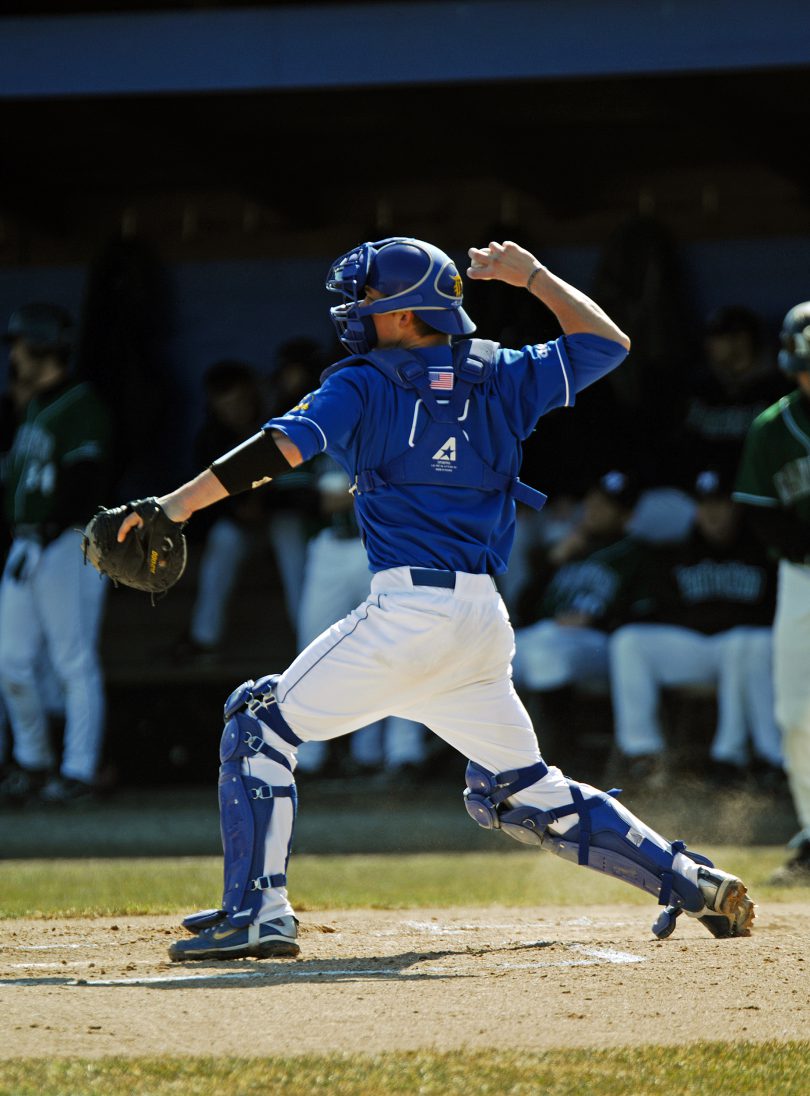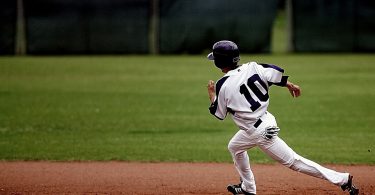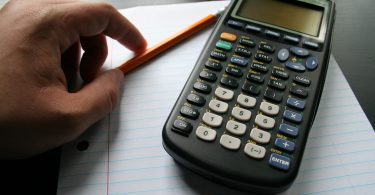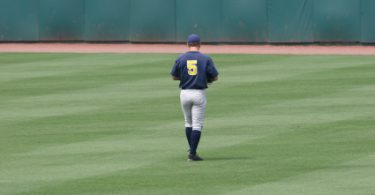In this latest installment on improving catch play, we turn our attention to the general of the defense—catchers. Much of what we suggested in the improving catch play for infielders article from last week is relevant for catchers and you will see some repeat information. If you are serious about developing a better catch routine, we suggest you read the infielders article in its entirety. In this post, we will go into more detail on what you need to improve your skills as a catcher.
No Talking While Throwing or Receiving
When you are trying to throw out a would be base stealer in the game, you are not talking or carrying on a conversation with anyone, are you? This is because the level of focus required to make such a play would make it extremely difficult to do. We want to practice like we play, so the first step to improving catch-play, and perhaps the most difficult, is to not talk and instead focus on what you are doing. If this is too difficult, save your chatter for between throws.
Now that you have complete focus on the task at hand, incorporate these other steps into your routine.
Pick a Specific Target (Something Small) For Each Throw
Every throw should have as specific a target as possible. Pick the logo of a shirt, hat, your partner’s hip, or something small. This will force you to focus and train you to not only throw to a specific area, but a specific target. Alternating from hip to hip or shoulder to shoulder is an advanced way of doing this after you have a single target down. By throwing specific, it will allow you to qualify your misses and help you assess what you can change. For example, if I have no specific target in mind, hitting my partner anywhere in the body will look like a success and provide me with little feedback. If I’m throwing to the logo in the middle of his chest and my throw arrives above his left shoulder, that tells me that I’m not finishing the throw and I can work to make the adjustment. It also allows me to realize if I have miss patterns that need to be addressed (like always missing arm side). More on that below.
Let the Ball Be Your Feedback
Work on creating proper backspin on your throws and let the flight of the ball provide you with valuable feedback. Does your ball tail? Does it cut? What does this tell you about what you are doing? Can you keep it straight at various levels of throwing intent? Do your poor throws have a pattern to them? What does that tell you about where you are making mistakes? Much like the batting cage, where the ball will help you figure out what you are doing right and wrong, each throw you make can do the same if you watch it carefully.
Quick Exchange (Hands)
The game is not the first time you should be working on making the exchange from glove to throwing hand at game speed. Catch play provides you with hundreds of opportunities each week to work on the exchange, a big part of the equation to the coveted two-second pop time. A few keys to focus on while working on to create the most efficient exchange possible:
- The hand should remain close to the glove as the ball bounce off of the pocket
- It’s a straight line from the point of exchange to the right shoulder in as efficient a movement as possible
- Think about “transferring up” to avoid circular transfers that take longer
Quick Exchange (Feet)
Much like infielders, catchers should be using active feet to assist with the exchange and throw. Your hands can only move as fast as your feet allow to be fully synced up to throw. Ideally, the back foot will plant right around the same time that the ball makes contact with your glove and the front foot will come down just before ball release in a 1-2 rhythm (More on this below!).
Feel the 1-2 Rhythm
Rhythm is an important thought when thinking about the role of the feet. Rather than overly mechanical cues about where the feet should and shouldn’t be, think about keeping the ball moving in the same way that a relay man would on a throw to the plate or a double play would be turned up the middle. It’s a 1-2 rhythm. Right foot (1), left foot (2), ball leaves hand. 1-2, throw. 1-2, throw. Rhythm and timing are critical and a lot can be learned by watching your middle infielders turn double plays. They also use a 1-2 throw rhythm when properly turning the double play.
Working on a quick catch and throw exchange does not mean playing “quick catch” every throw, but it does mean taking time to work on quick hands and feet a significant amount of time. When you are bringing it back in from long toss and fully warmed up is a great time to work on it. Take throws from your catcher’s stance and work your exchange and throw.
Maintain Good Balance and Strong Footing
Much of a catcher’s throwing skill relies on strong positioning and balance with the back foot. The ability to get a good push off of the right foot is a skill that can take stress off of the arm and be developed through practice.
Limit Your Posed Throws
While some people like to break catchers’ throwing motion down into stages, be careful not to overemphasize one pose to the point where it takes over your muscle memory. Make sure you are focusing on taking the ball out of your glove and throwing in a fluid motion, as you would in a game.
Accuracy or Speed?
Speed and accuracy are the name of the game. Without one, the other is essentially useless. Your catch play routine once you are fully warmed up is about speeding things up and slowing them down. Understand that when you are working on something specific like your exchange and throw, it’s okay to make mistakes. If you aren’t making any mistakes, you aren’t pushing it hard enough. Push the limits and see how fast you can go before accuracy goes out the window. Quickness and accuracy aren’t mutually exclusive and you should be working on both. Get used to moving quickly and don’t worry about bad throws if they are made with a purpose. No one wants to make bad throws and you will actively work to not make.
Make Game Specific Throws
It goes without saying that catchers, like all positions, should practice throws from body positions they’ll find themselves in during games. As we have mentioned, the game should not be the first time you make these throws at game speed. Simulate blocking a ball and then make a throw or simulate fielding a bunt and throwing to first base. Snap throws to 1st and 3rd base and throwing down are great things to work on when playing catch. Remember, you don’t have to make max-effort throws to be working on things and getting better!
Again, reading the infield catch routine article may prove incredibly helpful for catchers, who (like infielders) need to focus on quickness, efficiency, and consistency. Good luck, there is a lot to work on!







